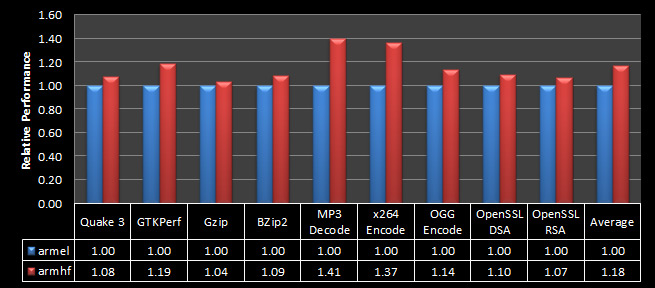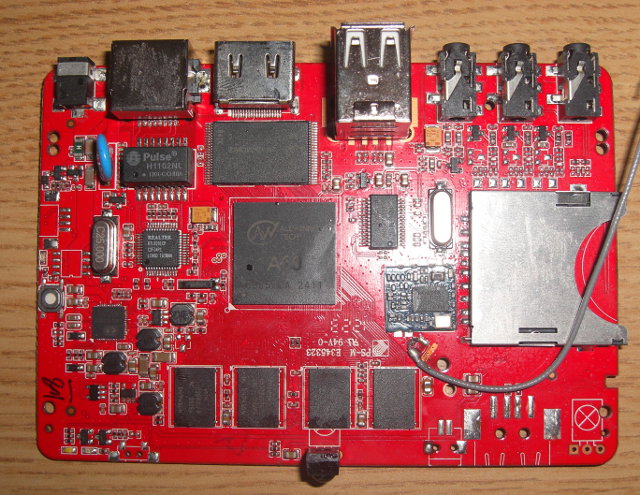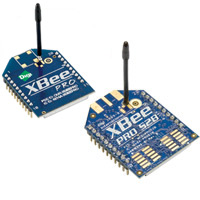The Raspberry Pi foundation announced the very first stable release of the Raspbian distribution, which is based on Debian 7.0 “Wheezy” armhf rootfs in order to take advantage of the FPU in Broadcom BCM2835. This distribution offers up to 40% performance improvement on several tasks, and for some specific tasks such as MP3 encoding is can boost the speed by nearly 6 times thanks to hard-float support. It is now the recommended distribution for the Raspberry Pi, runs LXDE environment, and comes with Midori browser, development tools and example source as per the previous Debian distros. omxplayer by gimli (XBMC developer) is also pre-installed in the image, and will allow you to play videos using hardware acceleration. You can download Raspbian via: Bittorrent – 2012-07-15-wheezy-raspbian.zip.torrent HTTP – 2012-07-15-wheezy-raspbian.zip The default credentials are pi / raspberry. Adam Armstrong has run some benchmarks to compare Raspbian (armhf) with the previous Raspberry Pi […]
Telechips Releases Linux Kernel 3.0.8 and Android ICS Source Code
Telechips has just uploaded the GPL source code for kernel 3.0.8 and Android 4.0 to the open source section of their website. If downloading from telechips website is too slow, you can also try alternate downloads (Thanks Gabe!): Kernel-3.0.8.tar.gz Ics.tar.gz I’ve also created 2 repositories in github: telechips-linux – Linux kernel source code telechips-android – Android platform open source code (webkit + OpenMAX source code) It haven’t looked into the source code in details yet, but hopefully, this will allow developers to customize the firmware running on Telechips TCC8925 based mini PCs such as CX-01 mini Android TV Box or Zero Devices Z900. Jean-Luc Aufranc (CNXSoft)Jean-Luc started CNX Software in 2010 as a part-time endeavor, before quitting his job as a software engineering manager, and starting to write daily news, and reviews full time later in 2011. www.cnx-software.com
HackBerry: AllWinner A10 Development Board with 1GB RAM
After the Raspberry Pi, the Gooseberry, here comes the HackBerry. This is another AllWinner board similar to the Gooseberry, but which Ethernet, a full sized USB ports, an IR sensor and 1GB RAM. Here are the board specifications : SoC – AllWinner A10 System Memory – 1 GB RAM Storage – 4GB Flash + SDHC slot USB – 2x USB 2.0 ports Connectivity: 10/100Mbit Ethernet Wifi – 802.11 b/g/n Video Output – 1 x HDMI + 1x Composite Audio I/O – Headphone + microphone IR sensor The board runs Android 4.0, but since it’s an AllWinner device, you can run what you want. In a way it’s similar to the Mele A1000, except it has more memory, but lacks SATA, VGA output and has one less USB port. I can’t see the serial port pins on the PCB picture either. There is pricing information or availability yet, as Jasbir only […]
Qualcomm Showcases Quad Core Snapdragon APQ8064 Application Processor
Way back in February 2011, Qualcomm announced the Snapdragon APQ8064, a quad core application processor clocked at up to 2.5 GHz, that was (and still is) supposed to be available in products end of 2012, beginning of 2013. They now have samples, and showcased the processor in an Android tablet reference design at UpLink 2012. The APQ8064 is part of SnapDragon S4 Pro family and features 4 Krait cores running at up to 1.5 GHz when all four cores are running, or up to 1.7 GHz when only one core is active, according to Anandtech. So it appears they did not follow up on the 2.5 GHz promise. APQ8064 is the first SoC featuring Adreno 320 GPU, and will be followed by MSM8960 later on. The demo below shows the 3D performance of the Qualcomm processor and GPU, and Raj Talluri, Senior Vice President, Product Management at Qualcomm, claims the […]
Digi Launches XBee Modules Examples Website To Get Started with IoT Development
Digi International has launches an example section on their website to showcase what can be done with their XBee 805.15.4, ZigBee and WiFi Modules, as well as their IoT gateway. They provide examples to use different type of sensors, control lights, motors, and more. They show demos on the website and explain how each components can be linked together, hooked to computers and connected to the internet. They currently just have a few tutorials only, but plan to add more overtime: Basic XBee 802.15.4 & Zigbee Chat 802.15.4 PWM and Digital Output with an LED 802.15.4 Digital Input with a Button 802.15.4 Analog Input with a Potentiometer Light Switch XBee – A wireless wall switch that can control lamps, fans, motors or your homemade robot The first four examples look good to get started, but the Light Switch XBee is the most interesting, and they describe 8 steps to show […]
Emdebian Grip 2.0: Debian For Embedded Systems
I’ve used Emdebian ARM toolchain for several things such as building Raspberry Pi kernel, or cross-compiling VMWare-View, but I must have not paid attention enough, as I only discovered that Emdebian also offered a lightweight Linux distribution for embedded systems called Debian Grip. There was also another distribution called Debian Crush, a customized Emdebian installation without perl, but development stopped after Debian 5.0. Debian Grip is binary compatible with Debian and supports i386, amd64, powerpc, armel, armhf, mips and mipsel. Ports for powerpcspe and sh4 are available for Emdebian unstable. The current stable version Debian Grip 2.0 is based on Debian 6.0 “Squeeze”. You can install Emdebian grip using CD /DVD ISO images or with multistrap (preferred method). Visit the Installation instructions page for details. Here’s how the installation sizes compare between Emdebian Grip (unstable) and Debian (unstable): A basic multistrap of Emdebian Grip (sid-grip) comes out at 56MB installed, […]
ELLCC Multi-Target Cross Compiler Based on Clang and LLVM Compiler Infrastructure
ELLCC is a project aiming at creating a multi-target cross compilation environment for embedded systems. which makes use of Clang and the LLVM compiler infrastructure. QEMU is used for cross-platform testing. The project goals are to implement the following key features: A functional C/C++ compiler based on Clang (ecc) Multi-target support: ARM, i386, Microblaze, Mips, Nios2, PowerPC, PowerPC64, Sparc and X86_64 Multi-OS support: Linux, Standalone, … A complete test environment that allows automatic unit and integration testing of the run-time environment and complete executables. Support of a wide variety of target processors from armv4 to armv7, several mips cores, i386, and more. The project is still being developed, and ELLCC is in a pre-release state. ELLCC is composed of the following components: ecc – The ELLCC C/C++ compiler, a single executable with gcc compatible options. binutils – The GNU binutils package. libecc – The C standard library based on the musl standard […]
ST-Ericsson To Launch 2.3 GHz NovaThor L8580 Dual Core Cortex A9 Processor
ST Ericsson is working on a new application processor manufactured with 28 nm FD-SOI technology by ST Microelectronics. The new processor NovaThor L8580 features 2 Cortex A9 core that can be clocked at 2.3 GHz and is aimed at smartphones and tablets. The company also improved power efficiency, as L8580 consumes 35% less energy than L8540 (28 nm) when clocked at 1.85 GHz (maximum frequency for L8540). If you need even lower power consumption, L8580 can be clocked at 1.0 GHz with an input voltage of 0.6 V, whereas current competitors’ processors require at least 0.9V to operate at 1GHz. ST-Ericsson estimates that Novathor L8580 will be able to offer an extra day battery life compared to L8540 on a typical smartphone, which correspond to about 4h and 2h30 extra for web browsing and HD video playback respectively. NovaThor L8580 SoC will embed a PowerVR SGX544 GPU clocked at 600 […]






